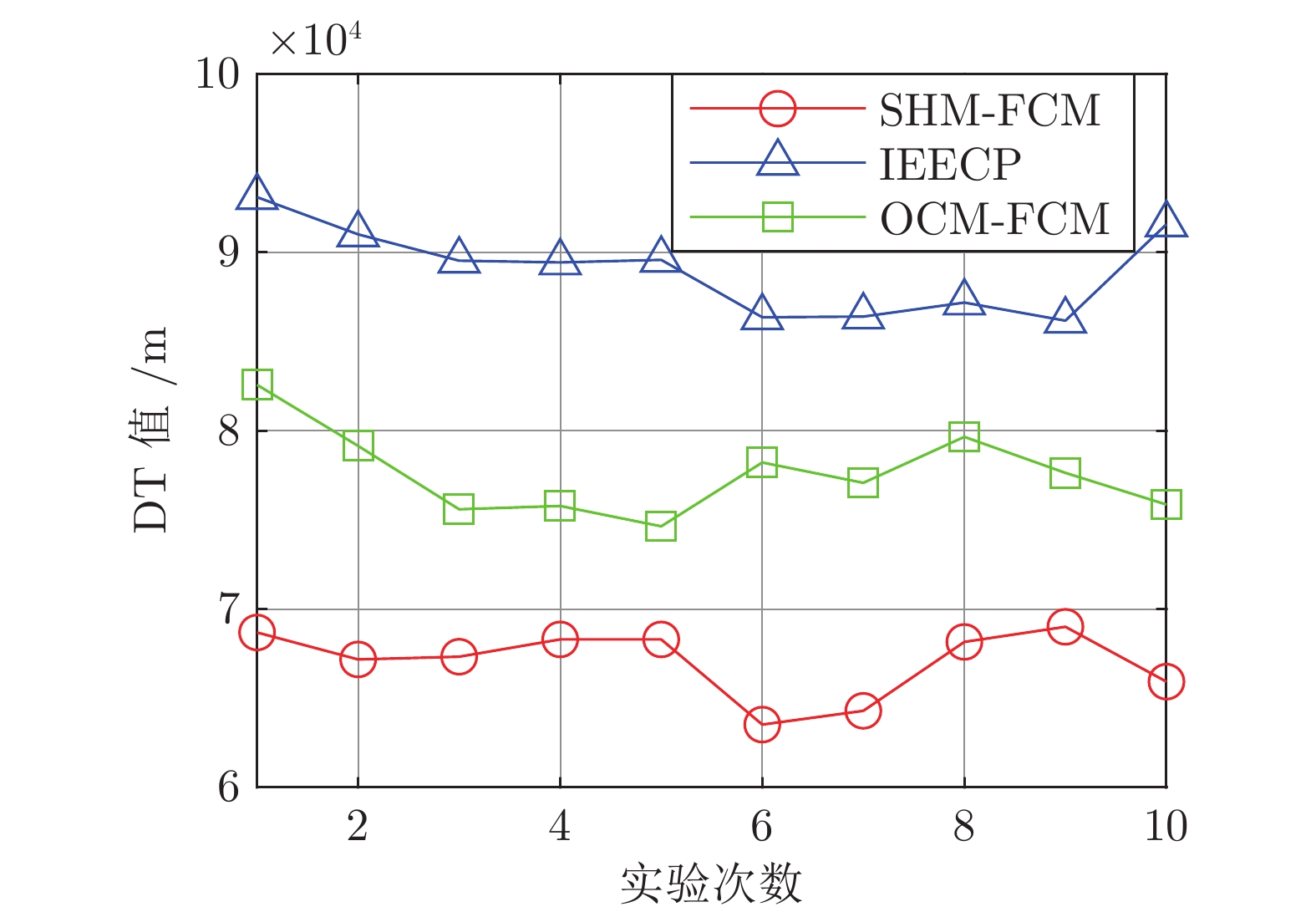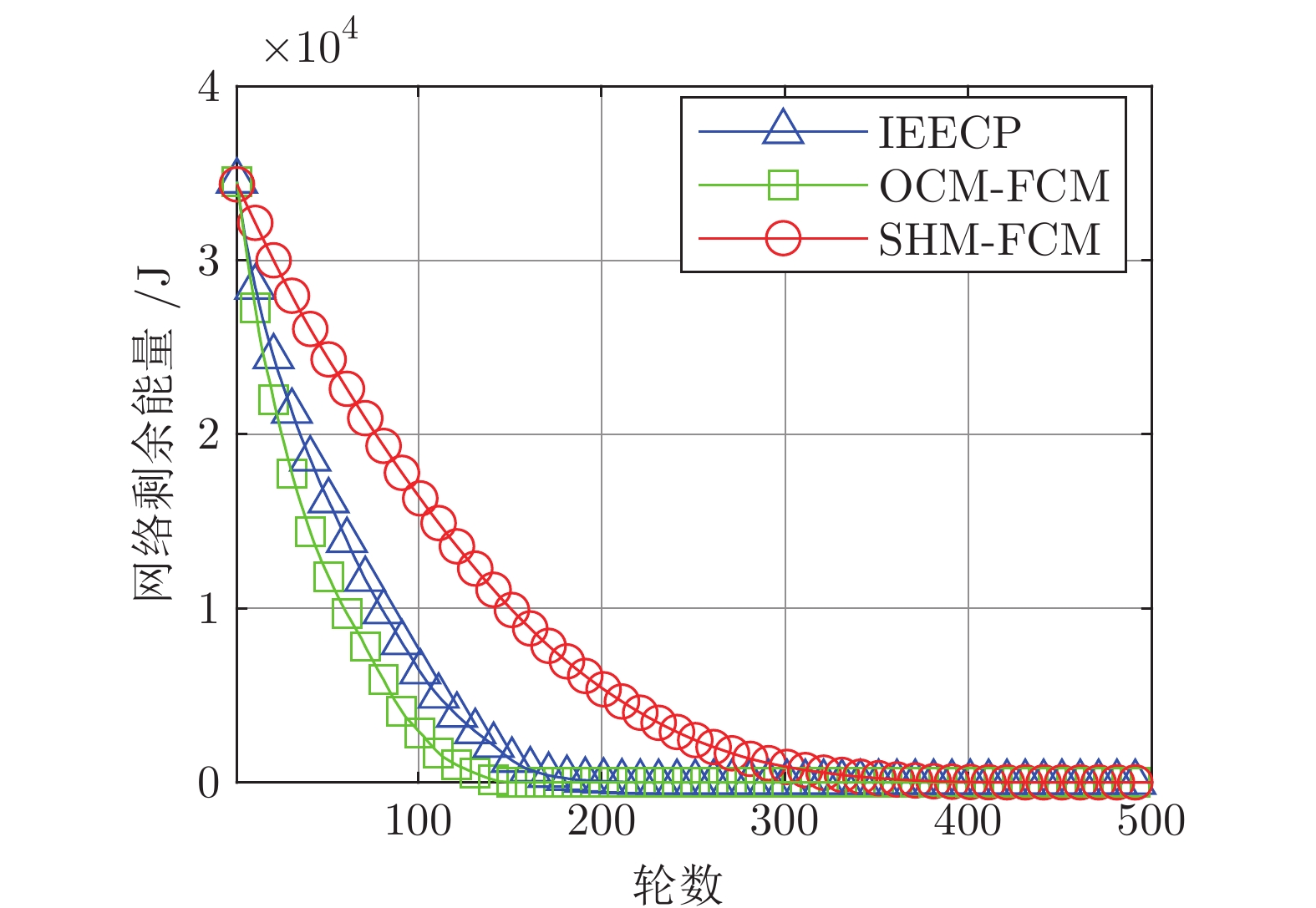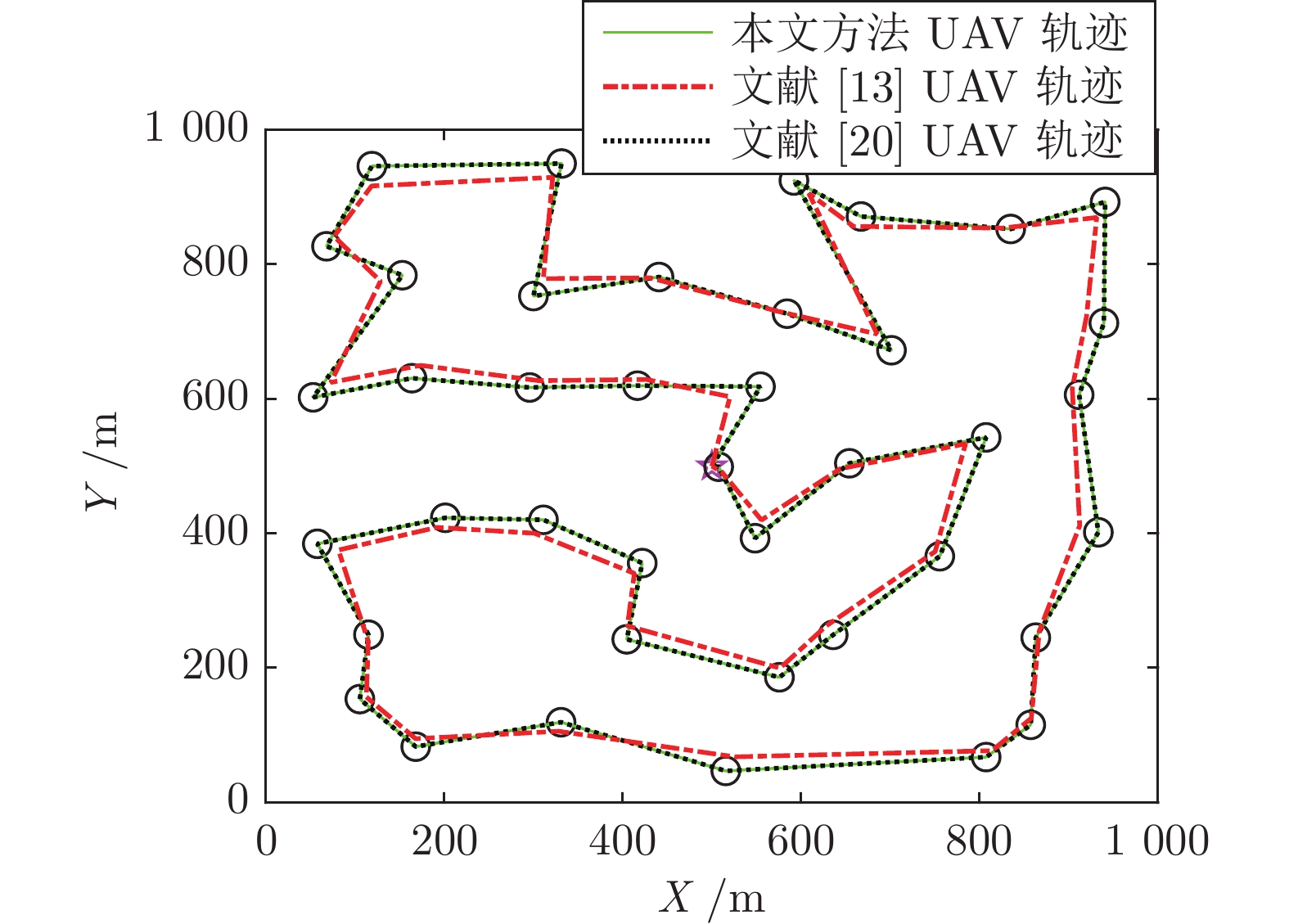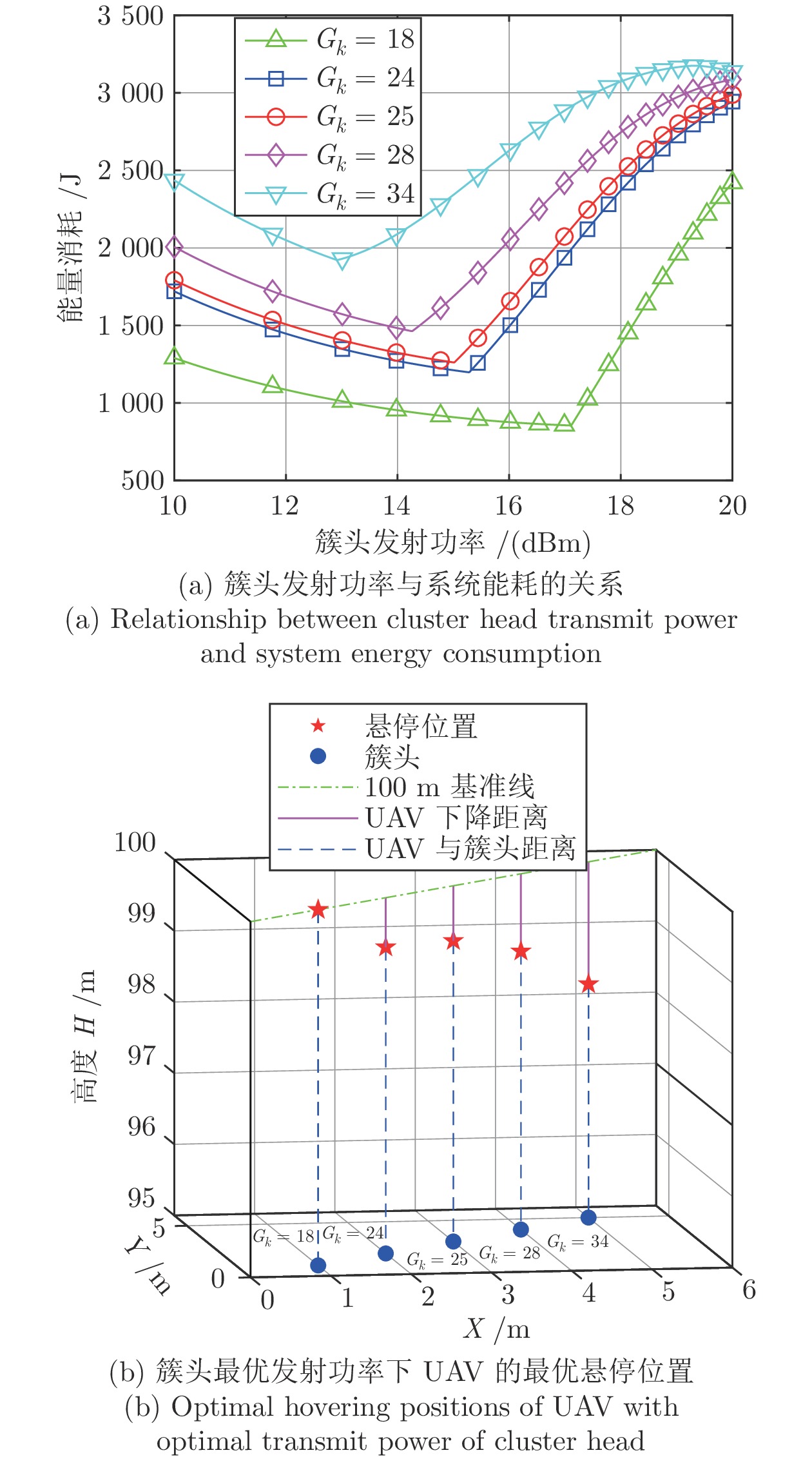Optimization of Total Energy Consumption for Unmanned Aerial Vehicle-enabled Wireless Sensor Networks
-
摘要: 为降低无人机(Unmanned aerial vehicle, UAV)使能的无线传感网(Wireless sensor networks, WSNs)的能耗, 延长网络生命周期, 提出一种在地面节点能量预算下系统总能耗优化方法. 首先, 提出地面节点聚类方法, 利用目标函数确定最优簇数, 改进模糊C均值(Fuzzy C-mean, FCM)算法构建能量均衡的集群, 采用退避定时器机制根据隶属度和能量值选择各集群的最优簇头, 减少地面节点的能耗; 然后, 根据已选簇头位置, 利用遗传算法规划UAV飞行轨迹, 减少UAV能耗; 最后, 通过单纯形搜索算法和连续凸逼近(Successive convex approximation, SCA)算法联合优化簇头发射功率和UAV悬停位置, 减少数据采集时系统的总能耗. 仿真结果表明, 该方法优于其他方法.Abstract: To reduce the total energy consumption for unmanned aerial vehicle (UAV) enabled wireless sensor networks (WSNs) and prolong the network lifetime, this paper proposes a scheme to optimize the total energy consumption of the system within the energy budget of ground nodes. Firstly, a clustering algorithm for ground nodes is proposed, where the optimal number of clusters is determined according to the objective function, then a fuzzy C-mean (FCM) algorithm is improved to form the energy-balanced clusters and a receding timer mechanism is employed to select the optimal cluster heads based on the affiliation and energy values, so as to reduce the energy consumption of ground nodes. Secondly, the flight trajectory of the UAV is planned according to the locations of the selected cluster heads by employing a genetic algorithm, which cuts down the energy consumption of UAV. Finally, the transmit power of the ground nodes and the UAV's hovering positions are optimized jointly by a simplex search algorithm and a successive convex approximation (SCA) algorithm to decrease the total energy consumption of the system for data collection. The simulation results verify that the proposal outperforms the compared schemes.
-
表 1 仿真参数
Table 1 Simulation parameter
参数 参数值 参数 参数值 $\alpha$ 0.03 ${{v}_{v}}$ 10 m/s $\beta$ 10 ${{E}_{cap}}$ 50 J $\eta LoS$ 3 dB $l$ 1 Mb $\eta NLoS$ 13 dB ${{\alpha }_{1}}$,${{\alpha }_{2}}$ 0.5 ${{d}_{0}}$ 1 m $\phi $ 1000 ${{\sigma }^{2}}$ −174 dBm/Hz ${{v}_{u}}$ 15 m/s 表 2 不同算法的VSC值比较
Table 2 Comparison of VSC values for different algorithms
实验次数 OCM-FCM IEECP SHM-FCM 1 428.40 52.85 48.50 2 362.35 49.05 46.70 3 271.15 66.55 57.65 4 254.20 51.75 43.45 5 272.40 58.65 50.50 6 387.50 52.90 31.75 7 329.15 49.35 43.54 8 289.45 58.45 62.55 9 290.25 55.80 55.20 10 319.15 46.75 37.50 表 3 网络稳定性比较
Table 3 Comparison of network stability
算法名称 FND HND LND WFND OCM-FCM 1 75 154 0.0065 IEECP 2 104 226 0.0089 SHM-FCM 9 176 416 0.0220 -
[1] Li J X, Zhao H T, Wang H J, Gu F L, Wei J B, Yin H, et al. Joint optimization on trajectory, altitude, velocity, and link scheduling for minimum mission time in UAV-aided data collection. IEEE Internet of Things Journal, 2019, 7(2): 1464−1475 [2] 王峰, 黄子路, 韩孟臣, 邢立宁, 王凌. 基于KnCMPSO算法的异构无人机协同多任务分配. 自动化学报, 2023, 49(2): 399−414 doi: 10.16383/j.aas.c210696Wang Feng, Huang Zi-Lu, Han Meng-Chen, Xing Li-Ning, Wang Ling. A knee point based coevolution multi-objective particle swarm optimization algorithm for heterogeneous UAV cooperative multi-task allocation. Acta Automatica Sinica, 2023, 49(2): 399−414 doi: 10.16383/j.aas.c210696 [3] Samir M, Sharafeddine S, Assi C M, Nguyen T M, Ghrayeb A. UAV trajectory planning for data collection from time-constr-ained IoT devices. IEEE Transactions on Wireless Communications, 2019, 19(1): 34−46 [4] 刘志新, 赵松晗, 杨毅, 袁亚洲. 智能反射面辅助的无人机无线携能通信网络吞吐量最大化算法研究. 电子与信息学报, 2022, 44(7): 2325−2331 doi: 10.11999/JEIT220195Liu Zhi-Xin, Zhao Song-Han, Yang Yi, Yuan Ya-Zhou. Thro-ugh put maximization algorithm for intelligent reflecting surface-aided unmanned aerial vehicle communication networks with wireless energy transfer. Journal of Electronics & Information Technology, 2022, 44(7): 2325−2331 doi: 10.11999/JEIT220195 [5] Heinzelman W B, Chandrakasan A P, Balakrishnan H. Approximate policy-based accelerated deep reinforcement learning. An Application-specific Protocol Architecture for Wireless Microsensor Networks, 2002, 1(4): 660−670 [6] Behera T M, Mohapatra S K, Samal U C, Khan S M, Daneshmand M, Gandomi A H. Residual energy-based cluster-head selection in WSNs for IoT application. IEEE Internet of Things Journal, 2019, 6(3): 5132−5139 doi: 10.1109/JIOT.2019.2897119 [7] Su S C, Zhao S G. An optimal clustering mechanism based on Fuzzy-C means for wireless sensor networks. Sustainable Computing: Informatics and Systems, 2018, 18: 127−134 doi: 10.1016/j.suscom.2017.08.001 [8] Hassan A A H, Shah W M, Habeb A H H, Othman M F I, Al-Mhiqani M N. An improved energy-efficient clustering protocol to prolong the lifetime of the WSN-based IoT. IEEE Access, 2020, 8: 200500−200517 doi: 10.1109/ACCESS.2020.3035624 [9] Zhan C, Lai H. Energy minimization in internet-of-things system based on rotary-wing UAV. IEEE Wireless Communications Letters, 2019, 8(5): 1341−1344 doi: 10.1109/LWC.2019.2916549 [10] Zhan C, Zeng Y, Zhang R. Energy-efficient data collection in UAV enabled wireless sensor network. IEEE Wireless Communications Letters, 2017, 7(3): 328−331 [11] Ebrahimi D, Sharafeddine S, Ho P H, Assi C. UAV-aided projection-based compressive data gathering in wireless sensor networks. IEEE Internet of Things Journal, 2018, 6(2): 1893−1905 [12] Chen J M, Li S Y, Chen S, He S B, Shi Z G. Q-charge: A quadcopter-based wireless charging platform for large-scale sensing applications. IEEE Network, 2017, 31(6): 56−61 doi: 10.1109/MNET.2017.1700071 [13] Zeng Y, Xu J, Zhang R. Energy minimization for wireless communication with rotary-wing UAV. IEEE Transactions on Wireless Communications, 2019, 18(4): 2329−2345 doi: 10.1109/TWC.2019.2902559 [14] Zeng Y, Zhang R. Energy-efficient UAV communication with trajectory optimization. IEEE Transactions on Wireless Communications, 2017, 16(6): 3747−3760 doi: 10.1109/TWC.2017.2688328 [15] Ghdiri O, Jaafar W, Alfattani S, Abderrazak J B, Yanikomeroglu H. Offline and online UAV-enabled data collection in time-constrained IoT networks. IEEE Transactions on Green Communications and Networking, 2021, 5(4): 1918−1933 doi: 10.1109/TGCN.2021.3104801 [16] Yang D C, Wu Q Q, Zeng Y, Zhang R. Energy tradeoff in ground-to-UAV communication via trajectory design. IEEE Transactions on Vehicular Technology, 2018, 67(7): 6721−6726 doi: 10.1109/TVT.2018.2816244 [17] Zhan C, Huang R J. Energy minimization for data collection in wireless sensor networks with UAV. In: Proceedings of the IEEE Global Communications Conference. Waikoloa, USA: IEEE, 2019. 1−6 [18] 王巍, 彭力, 赵继军, 朱天宇, 崔益豪, 田立勤. 基于旋翼无人机近地面空间应急物联网节点动态协同部署. 自动化学报, 2021, 47(8): 2002−2015 doi: 10.16383/j.aas.c180146Wang Wei, Peng Li, Zhao Ji-Jun, Zhu Tian-Yu, Cui Yi-Hao, Tian Li-Qin. Dynamic cooperative deployment of emergency internet of things near ground space based on drone. Acta Automatica Sinica, 2021, 47(8): 2002−2015 doi: 10.16383/j.aas.c180146 [19] 李安, 戴龙斌, 余礼苏, 王振. 加权能耗最小化的无人机辅助移动边缘计算资源分配策略. 电子与信息学报, 2022, 44(11): 3858−3865 doi: 10.11999/JEIT210832Li An, Dai Long-Bin, Yu Li-Su, Wang Zhen. Resource allocation for unmanned aerial vehicle-assisted mobile edge computing to minimize weighted energy consumption. Journal of Electronics & Information Technology, 2022, 44(11): 3858−3865 doi: 10.11999/JEIT210832 [20] Zhu B T, Bedeer E, Nguyen H H, Barton R, Henry J. UAV trajectory planning in wireless sensor networks for energy consumption minimization by deep reinforcement learning. IEEE Transactions on Vehicular Technology, 2021, 70(5): 9540−9554 [21] Zhu B T, Bedeer E, Nguyen H H, Barton R, Henry J. Joint cluster head selection and trajectory planning in UAV-aided IoT networks by reinforcement learning with sequential model. IEEE Internet of Things Journal, 2021, 9(14): 12071−12084 [22] Mozaffari M, Saad W, Bennis M, Debbah M. Mobile unmanned aerial vehicles (UAVs) for energy-efficient Internet of Things communications. IEEE Internet of Things Journal, 2017, 16(11): 7574−7589 -




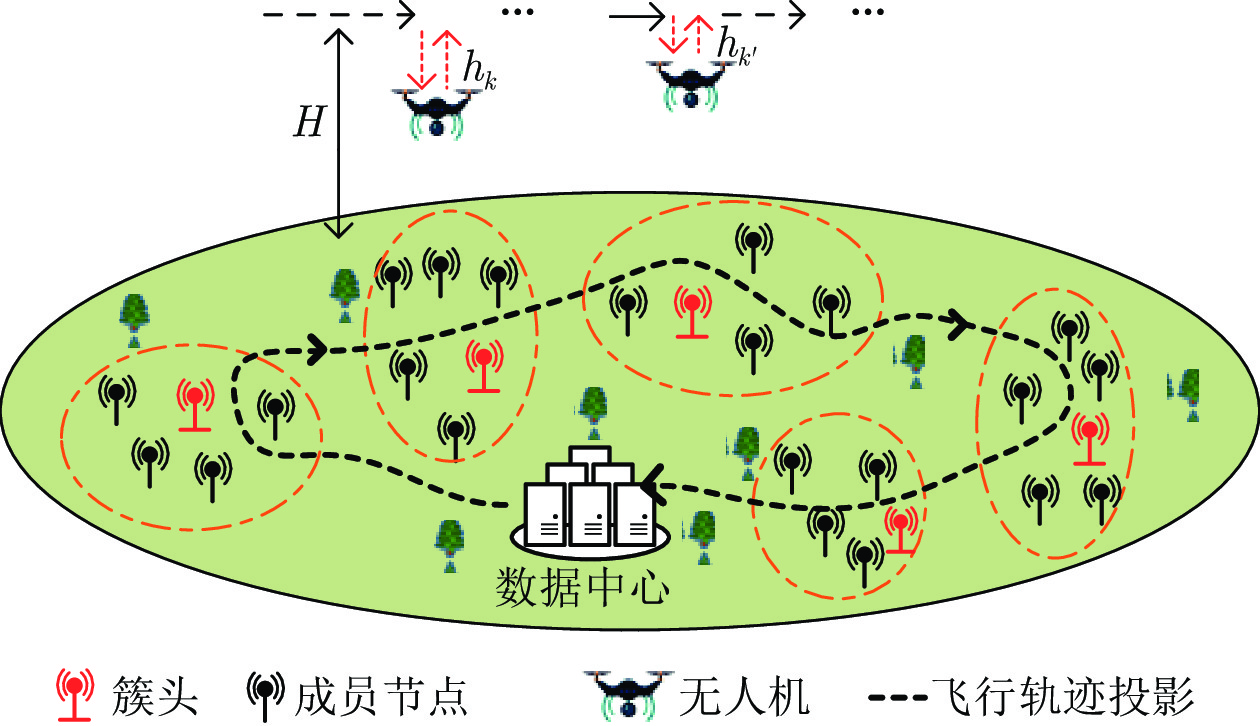
 下载:
下载:


